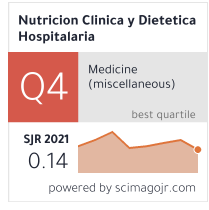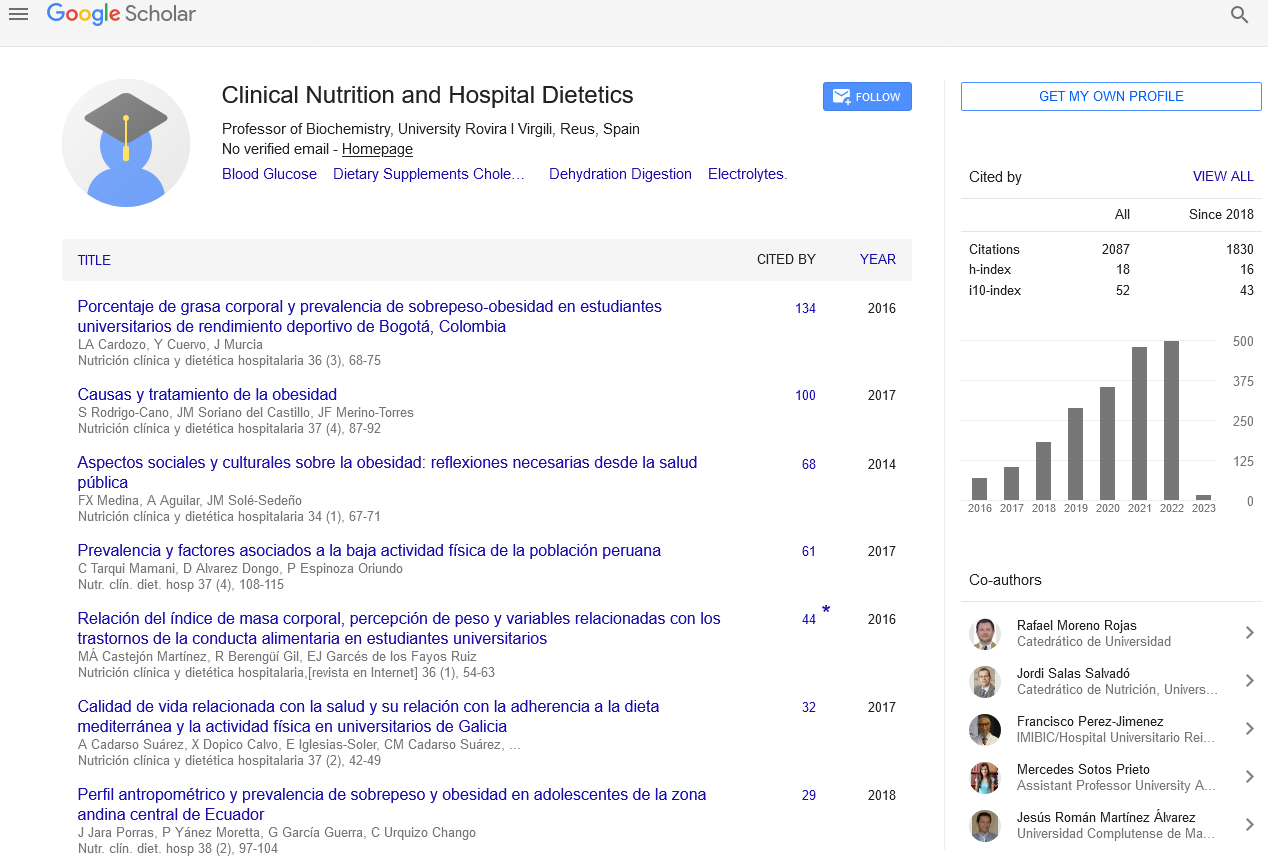Abstract
Nutritional Status of alcoholic patients of a hospital institution of the Brazilian Northeast
Author(s): Pereira de Andrade, Sheylane; Rolim de Lima, Cybelle; Gonçalves de Orange, Luciana; Batista de Medeiros, Tibério; Assunção Santos, Renata Emmanuele; Moura dos Santos, Hilda Carla; Camara e Siqueira Campos, Florisbela de Arruda
Introduction: Alcoholism is characterized by repetitive intake of alcohol, currently constituting a public health problem. Organic use of the energy provided by alcohol depends on the nutritional status of the individual, the frequency and pattern of consumption, which can lead to overweight and obesity in moderate drinkers, and malnutrition among chronic users.
Aim: To assess the nutritional status and associate it to socio-demographic factors of alcoholic inpatients.
Methodology: Study of a cross-sectional type made in a hospital institution of the Brazilian Northeast. All patients with diagnoses for Alcohol Dependence Syndrome (ADS) were included in the research, inpatients and those who fulfilled the eligibility criterion. The data collection was done through a proper structured questionnaire, approaching socio-demographic information, anthropometrical and of comorbidities.
Results: 121 alcoholic adults were assessed, with an age range of 43,59±9,53 years old, of the masculine gender. The prevalence was of divorced individuals (38%), unemployed (54,5%), with low school level (44,6%) and with family income between one and two minimum wages (41,3%). It was also verified that 75,2% of them were eutrophic, according to the Body Mass Index (BMI), however 66,1%, 83,5% and 88,4% were malnourished, according to the Triceps Skinfold Thickness (TSF), the Arm Circumference (AC) and the Arm Muscle Circumference (AMC), respectively. As for the abdominal obesity, 92,6% and 72,7% of the individuals were classified as with no abdominal obesity, according to the Waist Circumference (WC) and the waist-to-height (WHtR), respectively, and 91,7% with no risk to cardiovascular disease in accordance to waist hip ratio (WHR).
Conclusion: Besides the social and economic damages caused by the excessive alcohol consumption, It also became clear the detrimental health effects, mainly to the nutritional status, with the impairment of either the lean mass or the fat mass being observed.
Google Scholar citation report
Citations : 2439
Clinical Nutrition and Hospital Dietetics received 2439 citations as per google scholar report
Indexed In
- Google Scholar
- Open J Gate
- Genamics JournalSeek
- Academic Keys
- JournalTOCs
- ResearchBible
- SCOPUS
- Ulrich's Periodicals Directory
- Access to Global Online Research in Agriculture (AGORA)
- Electronic Journals Library
- RefSeek
- Hamdard University
- EBSCO A-Z
- OCLC- WorldCat
- SWB online catalog
- Virtual Library of Biology (vifabio)
- Publons
- MIAR
- Geneva Foundation for Medical Education and Research
- Euro Pub
- Web of Science
Journal Highlights
- Blood Glucose
- Dietary Supplements
- Cholesterol, Dehydration
- Digestion
- Electrolytes
- Clinical Nutrition Studies
- energy balance
- Diet quality
- Clinical Nutrition and Hospital Dietetics




